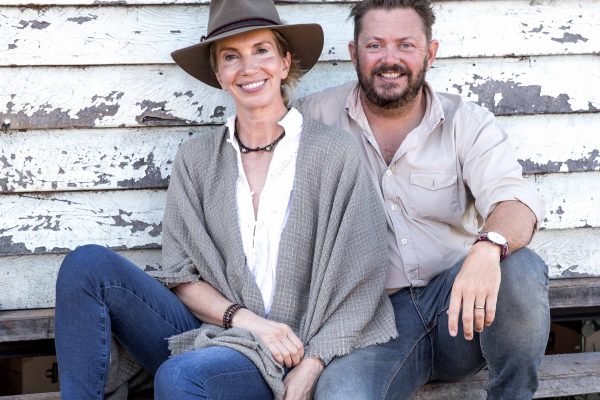We all love seeing butterflies in our gardens. But if you want more than a passing visit, your garden needs to offer more than lovely flowers.
Over the past few decades, as native bushland disappears, our gardens have become some of the last places where butterflies can complete their life cycles.
Urban gardens, especially those planted with native species, are now some of the most important habitats for wildlife in Australian cities and suburbs.
Whether they support biodiversity or not depends almost entirely on what we choose to plant.
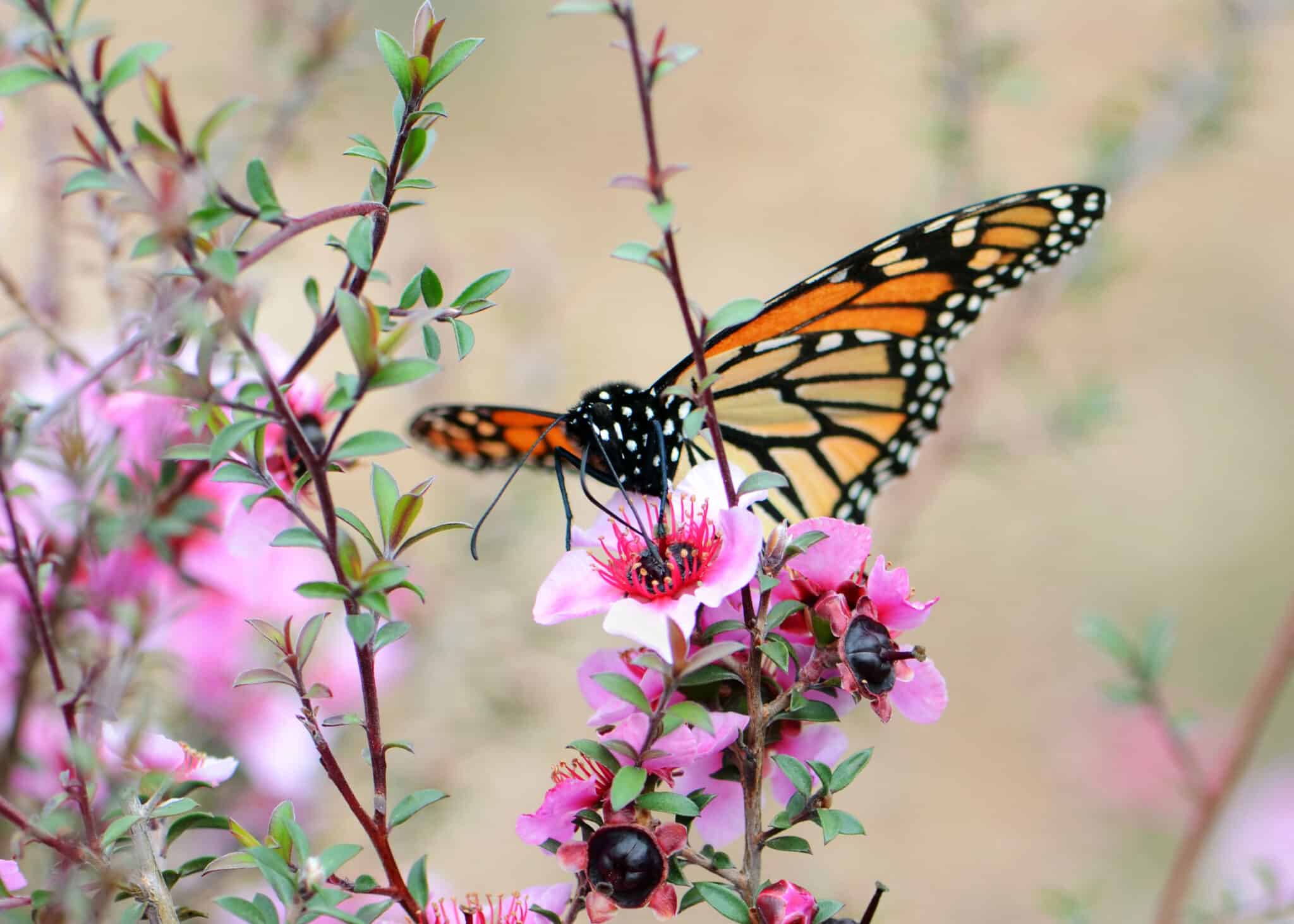
Butterflies and their future selves need very specific things to survive. If we want more butterflies in our gardens to really support them, we need to think about the whole life cycle.
How to Attract and Support Butterflies in Your Garden
Egg – caterpillar – chrysalis – adult.
Most gardens only cater to that final adult stage. That’s important. But it’s only one part of the story.
Butterflies also need host plants.
These are the specific plants where they lay their eggs and where their caterpillars feed and grow. Without host plants, butterflies might visit your garden, but they won’t stay, and they won’t reproduce.
Australia is home to around 440 species of butterflies. These days, we see so few in our gardens. And sadly, several are now at risk of extinction.
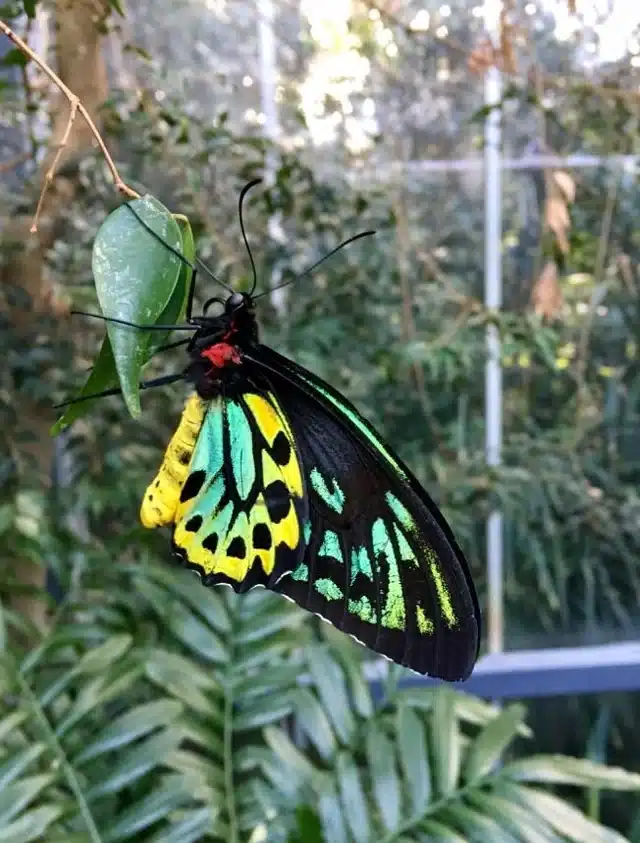
The butterfly that almost disappeared
If you live in SE Queensland or Northern NSW, you might have heard of the Richmond Birdwing Butterfly (Ornithoptera richmondia).
It’s big, beautiful, and used to be common here. But as development spread and habitat disappeared, so did the butterfly.
Its larvae feed on one plant and one plant only: Pararistolochia praevenosa, the Richmond Birdwing Vine. When that vine was cleared from native forests and suburban gardens, the butterfly lost its only nursery.
To make matters worse, an ornamental lookalike, the Dutchman’s Pipe (Aristolochia elegans), became a popular replacement. It looks similar, but it’s toxic. The butterflies lay their eggs on it, and the caterpillars don’t survive.
This single plant swap nearly wiped out an entire species.
But here’s where it gets good
In 2017, a small group of residents in Brisbane’s west decided to do something about it. The Moggill Creek Catchment Group began a local conservation campaign, Bringing the Richmond Birdwing Butterfly Back to Brisbane project, working with scientists, schools, and backyard gardeners to reintroduce the correct vine back into the landscape.
When conservation efforts first began, the Richmond Birdwing Vine was almost impossible to find in nurseries. Commercial propagation was limited, and the few wild populations left were often inaccessible or too fragmented to collect seed from reliably.
So local gardeners stepped in.
The backyard growers, school and community groups, everyday people started growing the vine themselves, sharing cuttings, and distributing seedlings through their networks and council programs. A community-powered recovery.
I love this story. It’s such a powerful reminder that you don’t need acres of land to be part of a solution. One plant in one backyard, multiplied across hundreds of homes, can change the course of a species.
Here’s the most recent update from December 24, with links to purchase vines and get involved in the project.
What butterflies actually need in your garden
Let’s break it down.
A butterfly’s life cycle includes four broad stages: egg, caterpillar, chrysalis, and adult. Most of what we plant in our gardens only caters to the last one.

Lepidoptera Lifecycle via Museums Victoria
To support the entire cycle, we need:
- Host plants for butterflies to lay eggs and for caterpillars to feed on.
- Nectar plants to feed the adult butterflies.
- Flat rocks for basking. Butterflies are solar-powered and need warmth. Basking in the sun enables butterflies to be active for greater parts of the day and also provides courtship opportunities.
- Zero pesticides and herbicides. Caterpillars are sensitive to them; even organic sprays can harm them.
- Leave things a little messy. Things like fallen leaves, branches, and bark can create shelter.
Choosing the Right Host Plants
Host plants are often species-specific.
Butterflies are highly specialised in their relationships with the plants they lay their eggs on. They’ve evolved together over millions of years, with caterpillars adapting to feed on the chemical and physical traits of very specific plants.
Even closely related plants might not be suitable.
Some butterflies can only use a single plant species. Others have a handful of acceptable hosts, usually within the same genus or plant family. And while a few generalist butterflies and caterpillars have adapted to feed on a wider range of plants, often introduced ones, the majority are still picky.
This pickiness is what makes host plants so important.
Butterflies have short lifespans and often small ranges. They evolved with your local flora. Not necessarily plants from other states or climate zones. So often, the host plant has to be native to your area.
Start small. Pick one or two host plants for one butterfly species you’ve seen in your area. That’s enough. As your garden evolves and your confidence grows, you can add more.
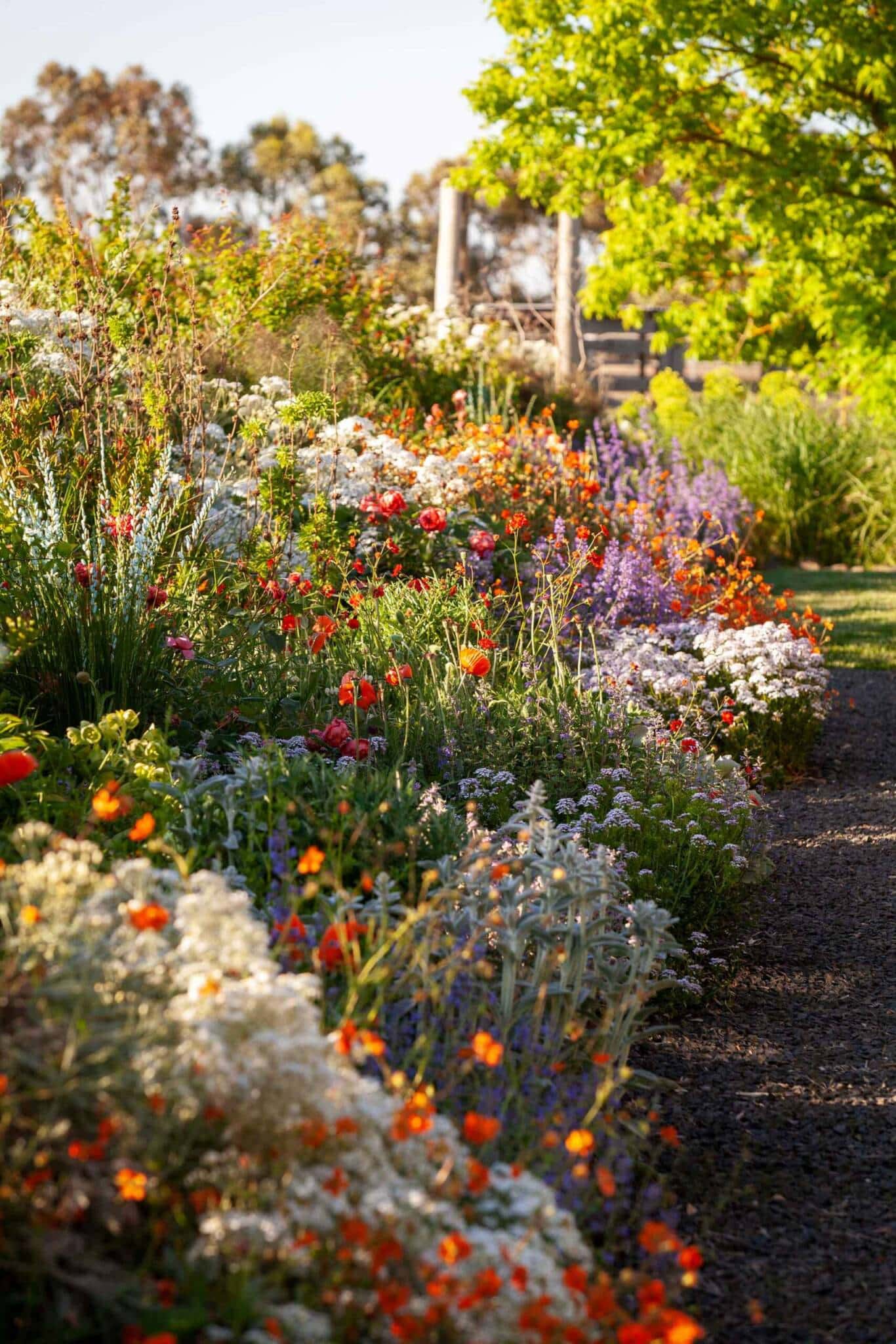
Butterfly Host Plants in Australia: What to Plant
The best place to start your planting plan is the Lepidoptera Butterfly House database. It’s comprehensive. And one of the most reliable online plant resources I’ve come across.
The database lets you search either by butterfly or caterpillar species or by plant.
Scroll to the bottom of any butterfly profile, and you’ll find a list of host plants. Match those with what’s native to your region, and you’ve got your starting point.
Another great resource is this plant finder from Butterfly Conservation South Australia is SA specific – all you need to do is pop in your postcode.
More resources are shared further down.
Image: Native Flower Garden via Australia Homes to Love
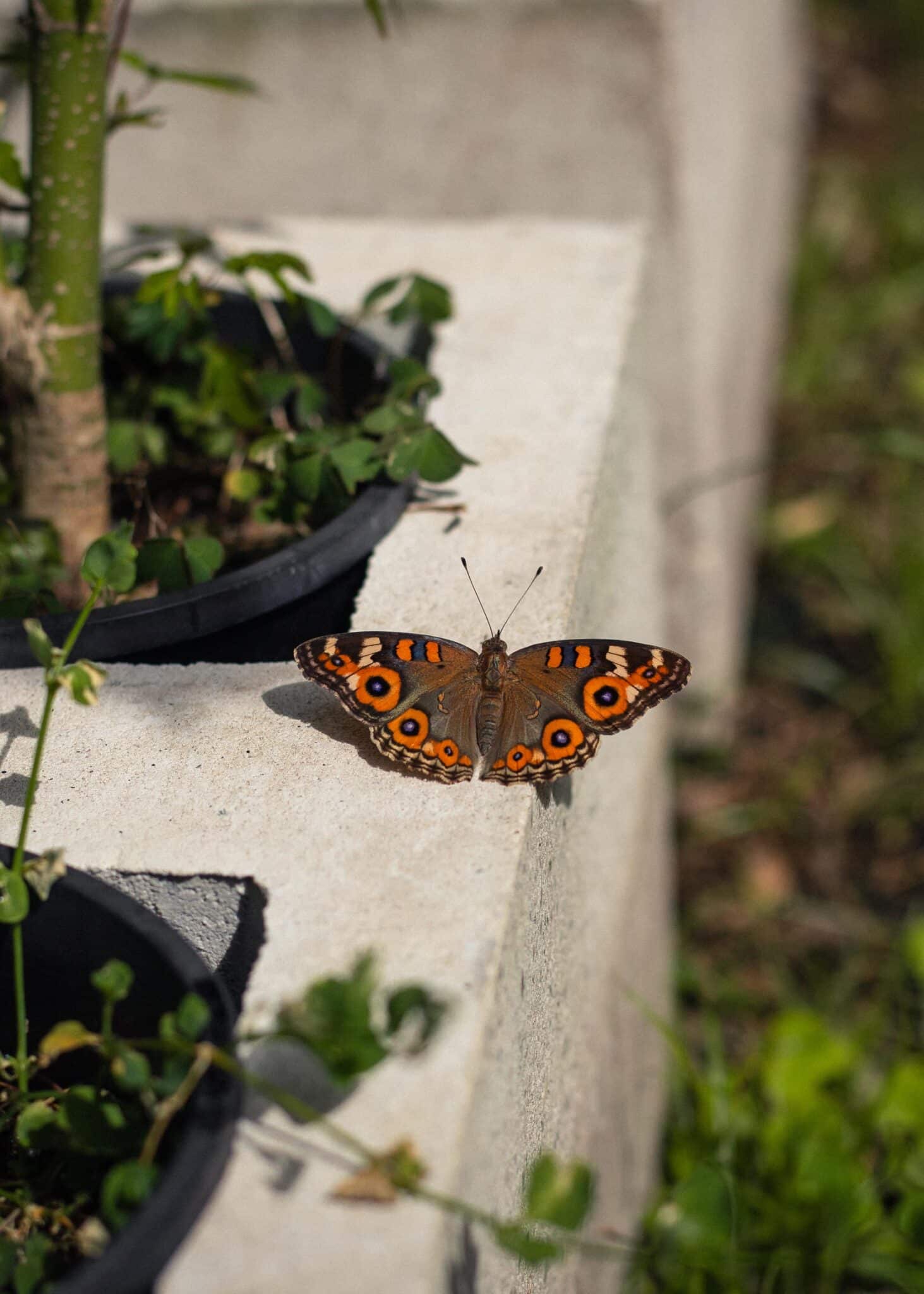
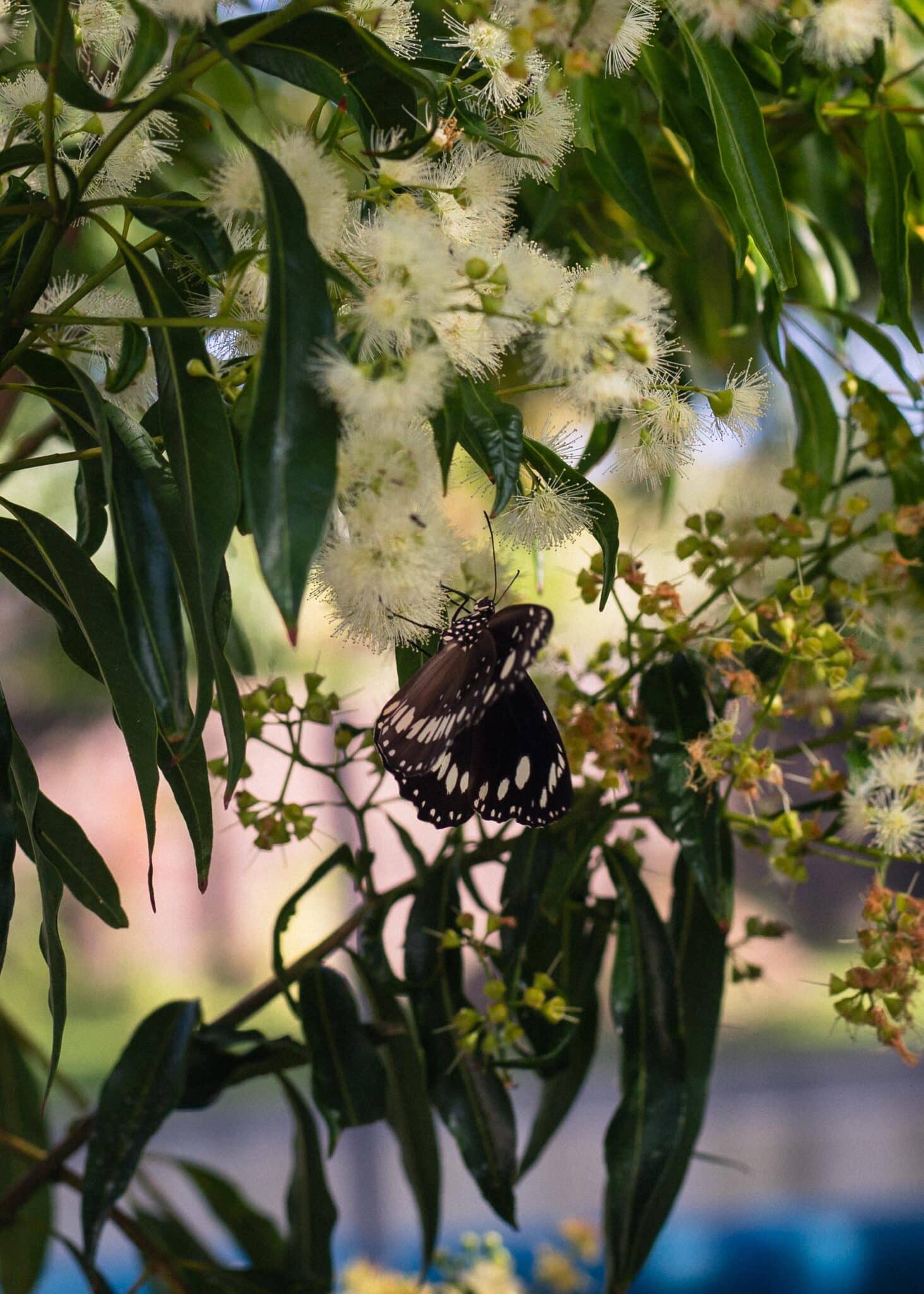
Here are a few examples using butterflies I’ve seen in my own garden, and the host plants they rely on to complete their life cycle.
- Common Crow (Euploea core) – Host plants in the Aponaecea family: Desert Rose (Adenium obesum), Waxflower (Hoya australis) and Moraceae family: Weeping Fig (Ficus benjamin), Morton Bay Fig (Ficus macrophylla). There are quite a few more this species prefers.
- Orchard Swallowtail (Papilio aegeus) – Widely lay on the Rutaceae family. Some host plants: Citrus species (e.g. lemon, lime, orange), Finger lime (Microcitrus australasica), Bennett’s Ash (Flindersia bennettiana),
- Australian Willow (Geijera parviflora), just to name a few.
- Meadow Argus (Junonia villida) – This one lays and feeds on many common backyard garden plants: Fairy Fanflower (Scaevola aemula), Verbena (Verbena species), Purslane (Portulaca oleracea), Angelon (Angelonia salicariifolia).
The Story of my Orchard Swallowtail
An entire lifecycle was privileged to witness a few months back.
One morning, while watering the garden, I noticed something on the Finger Lime (Citrus australasica). A little brown-and-white blob stuck to the stem. Bird poop, I thought. Until it moved.
A bit of Googling (and a lot of excitement) later, I found out it was the larva of a Papilio aegeus. The Orchard Swallowtail Butterfly.
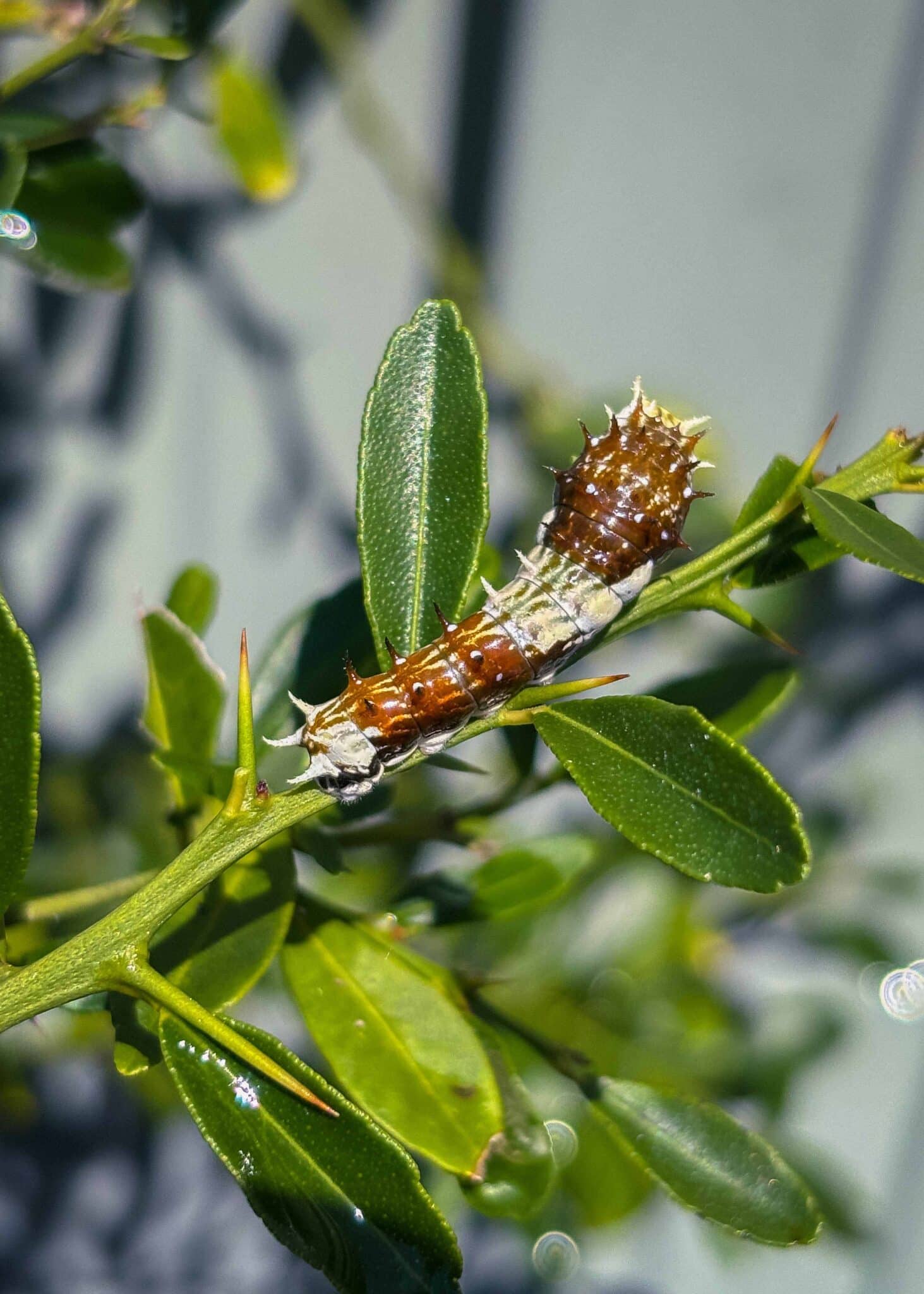

They’re one of Australia’s largest butterflies found all along the East coast and some parts of South Australia and Western Australia. A common sight if you’ve got citrus trees growing in the Garden. The females lay eggs on soft new growth, and when the caterpillars hatch, they get straight to work eating the leaves.
During the caterpillar’s first Instars (life stages), they’re camouflaged to look a bit like bird poop (clever) before growing greener and chunkier as they fatten up. The whole process, from egg to butterfly, can take just over a month, depending on the weather. A few days to hatch, a couple of weeks munching, then another few weeks pupating in their chrysalis before they emerge.
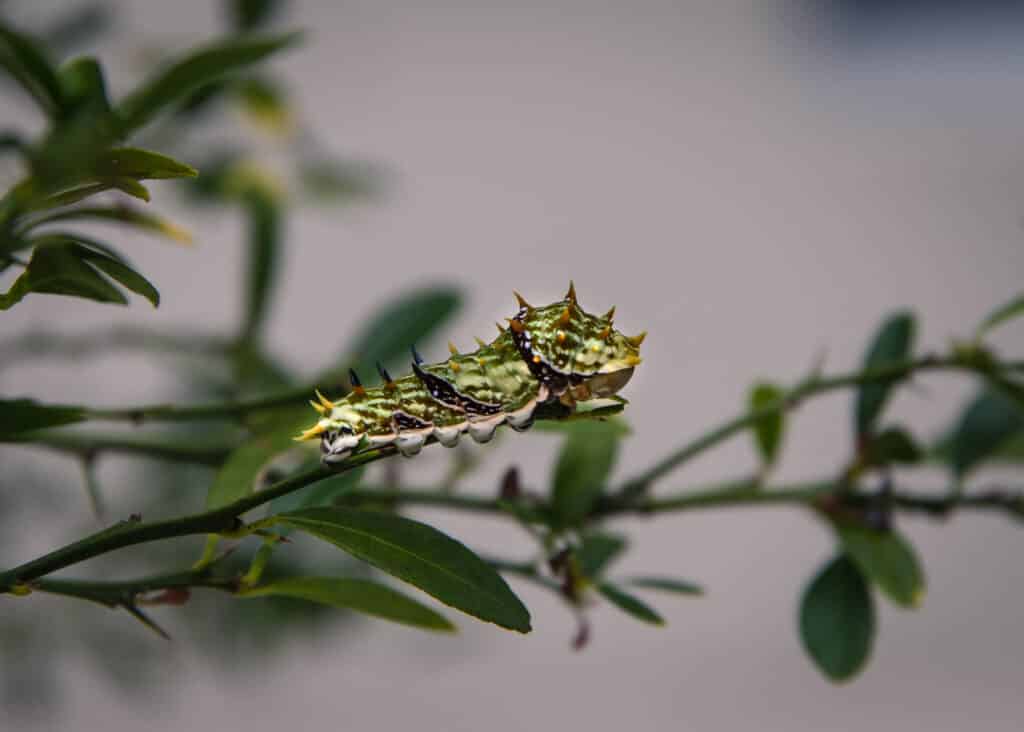
When disturbed, the caterpillars rear up at the front and briefly evert this red forked osmeterium from behind the head.
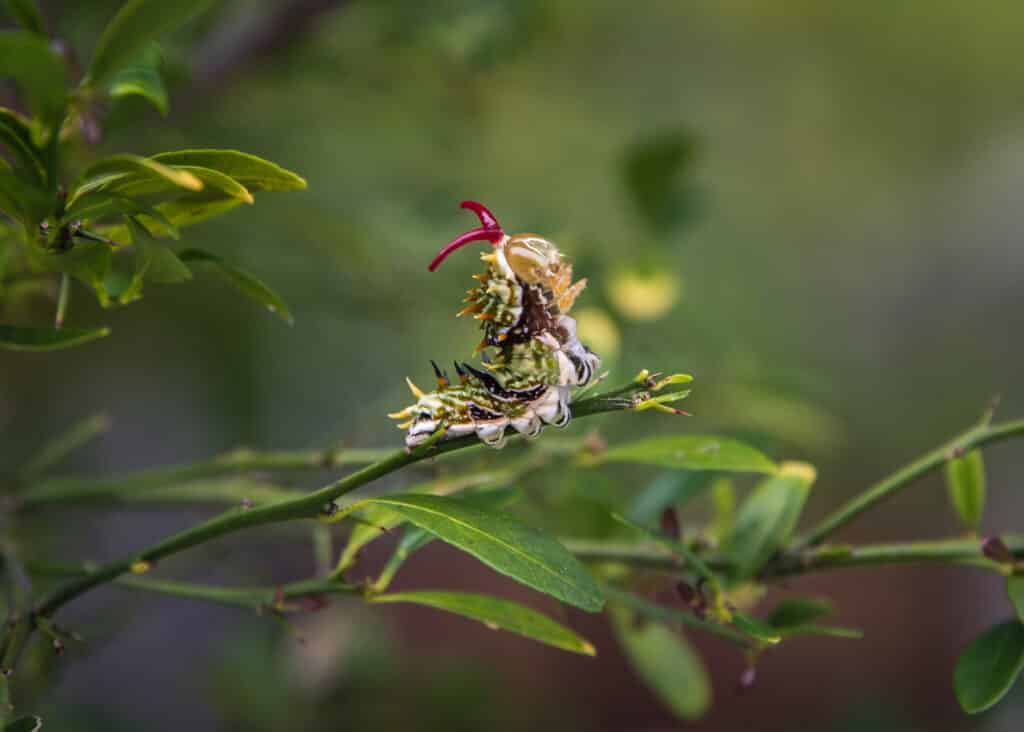
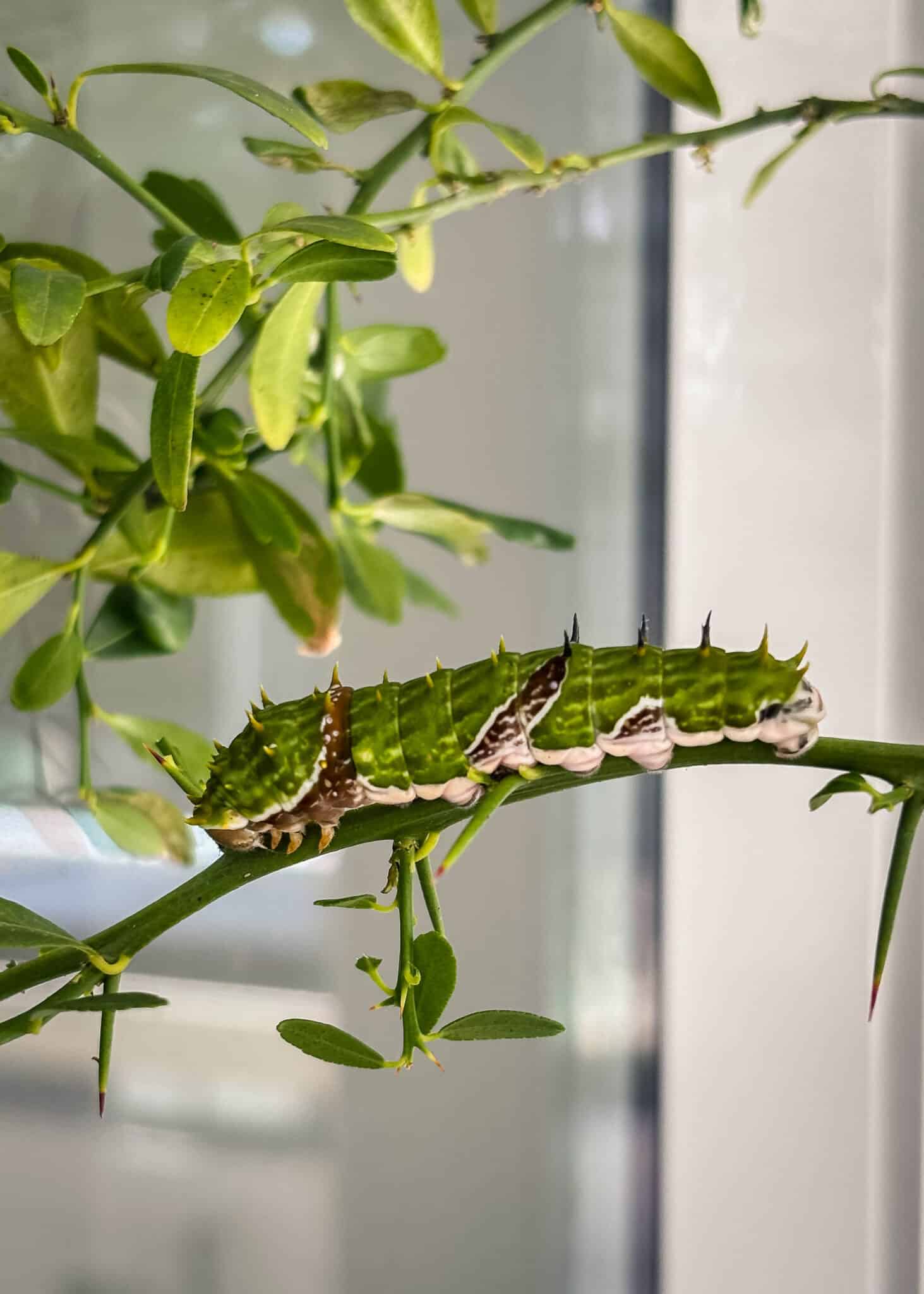
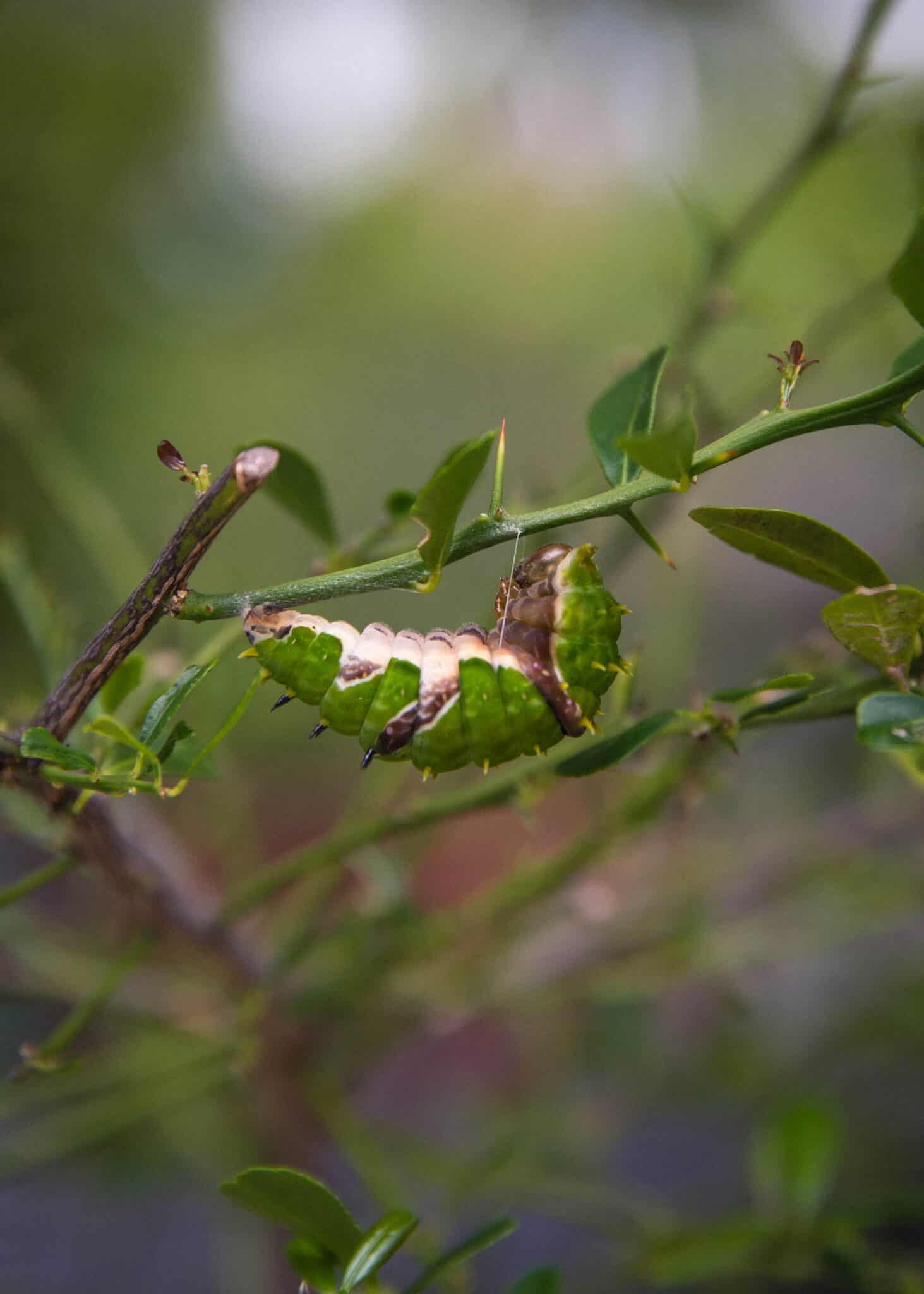
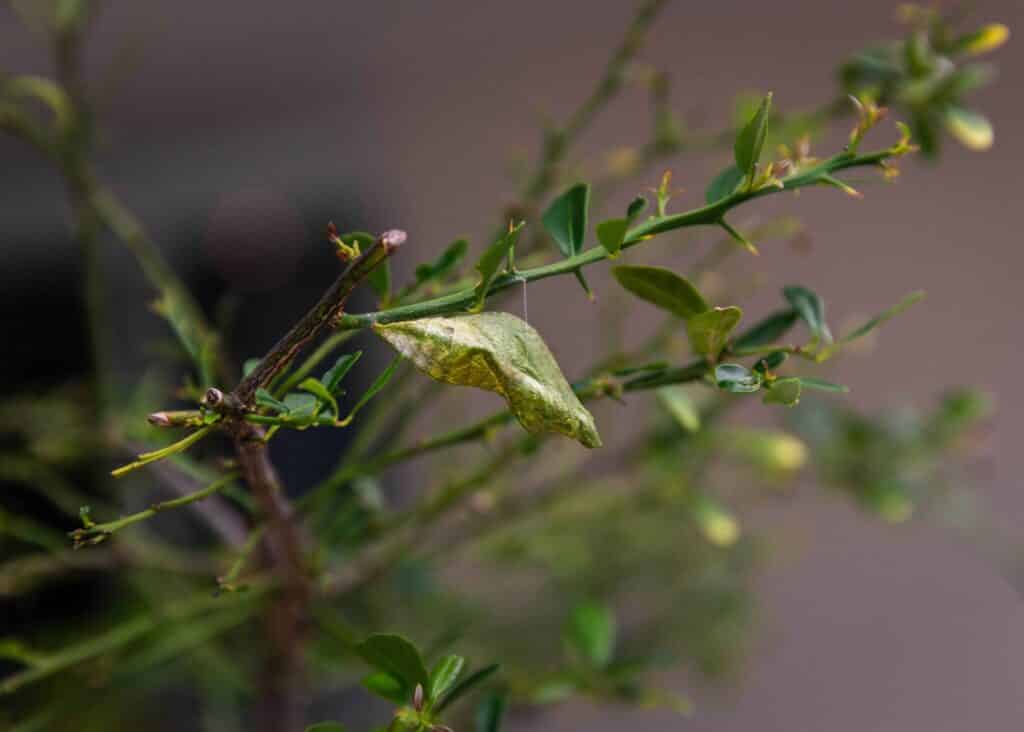

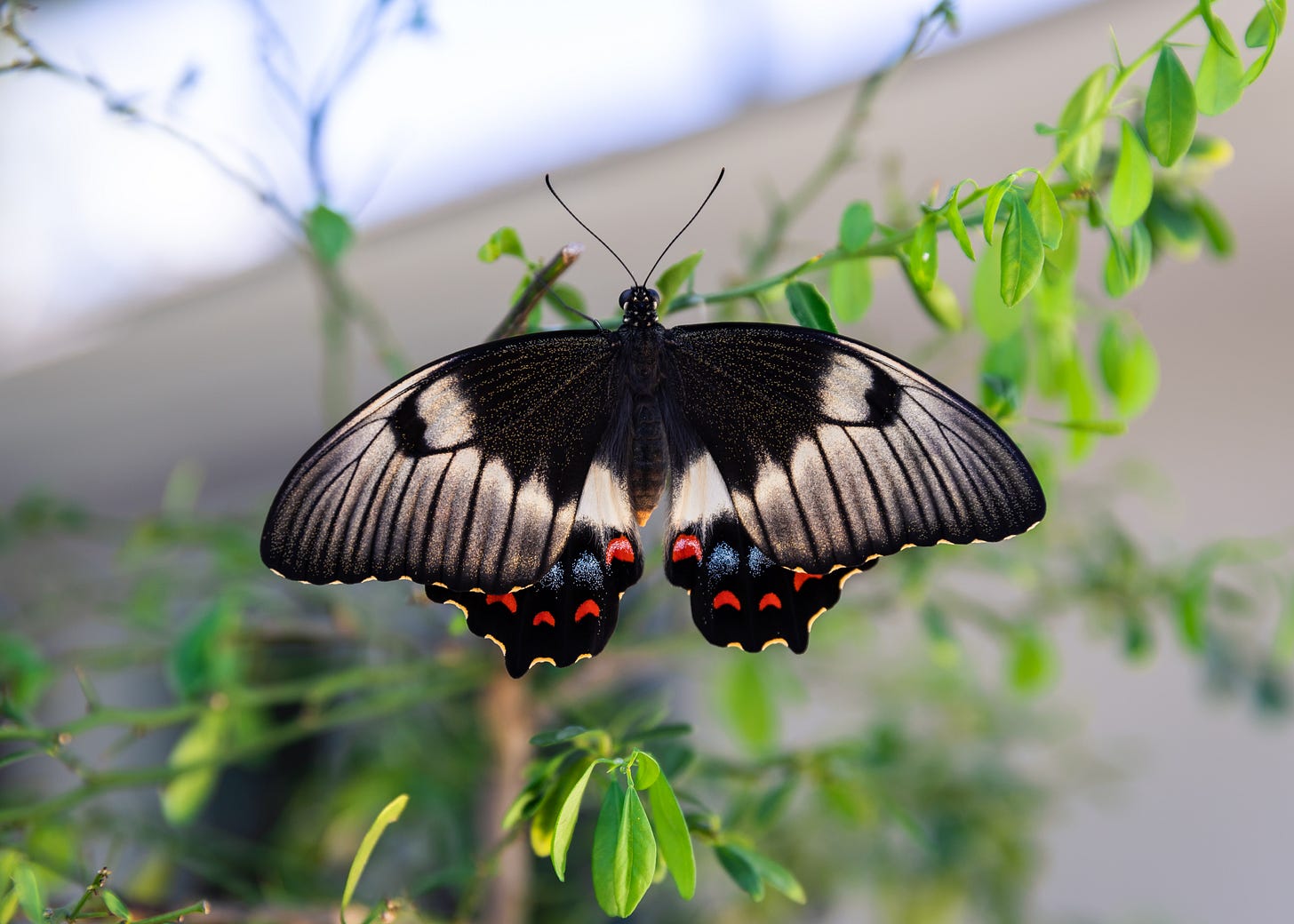
Early in the morning, while I was pottering in the garden, not paying close attention. On my way back inside, I noticed a dark shape in the corner of the alfresco bench, the spot where the finger lime lives. Usually just background, a soft blur of green against the pale wall. A shadow in my periphery. I almost missed it. It was my first time seeing a butterfly emerge up close, and it was an incredible experience.
This is why I garden the way I do. I say it’s for the wildlife. For biodiversity. And it is. But also for the pure joy of moments like this.
And now, more finger lime seedlings have been added to the plant wishlist. Because I’d really like to see this again.
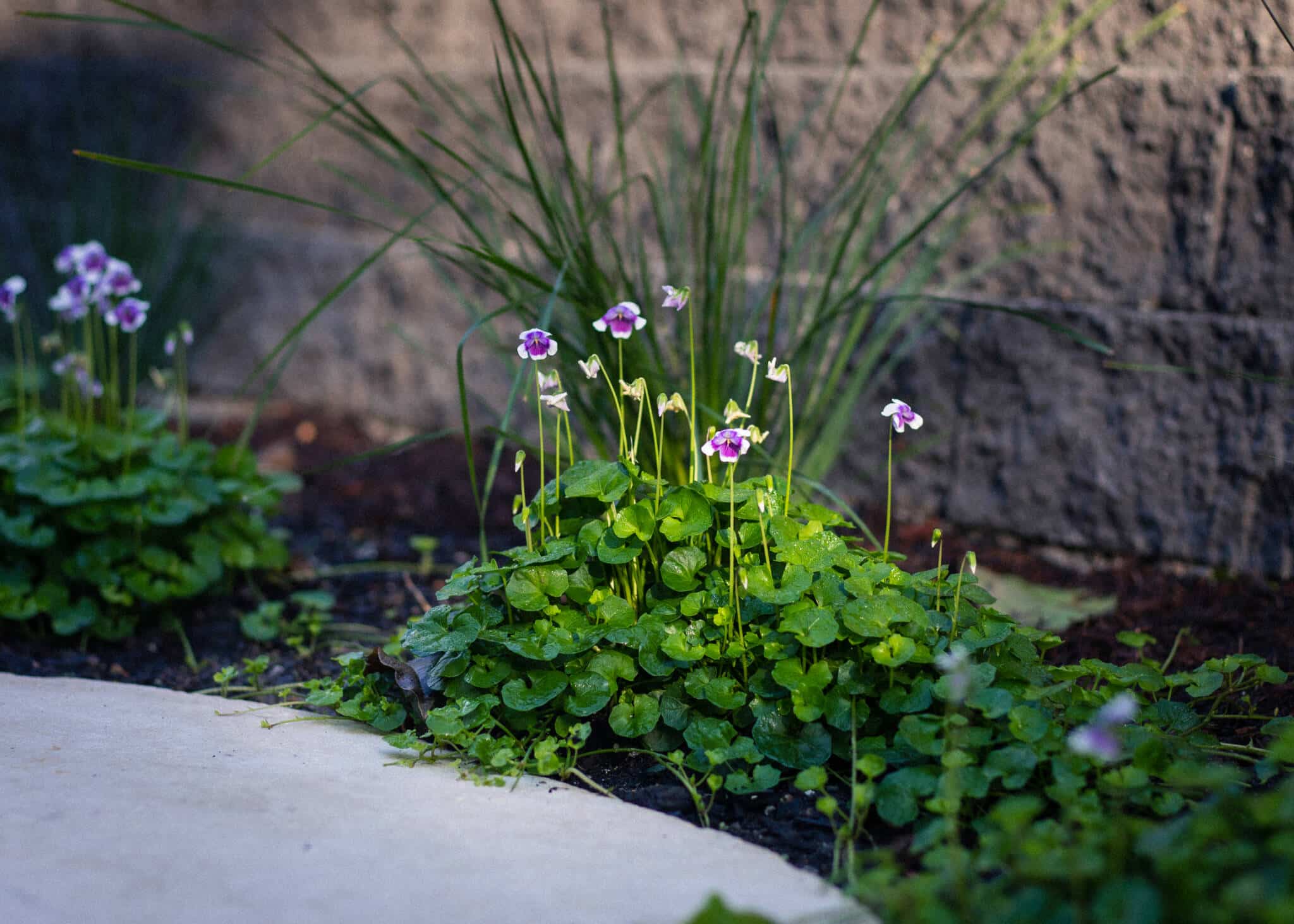
Best Nectar Plants for Australian Butterflies
These are the easy part, and often already in your garden.
Butterflies usually aren’t too picky when it comes to feeding. What they need are open, accessible flowers they can land on.
There is more nuance to this, but for the sake of this guide and simplicity while getting started, common flowers found at local nurseries (chat with the nursery staff for recommendations) will do the trick.
Different butterflies have different feeding styles. Feeding behaviour and flower choice are influenced by proboscis length.
Some are suited to tubular flowers, like Salvias and Grevilleas. Others prefer flatter, daisy-like flowers with wide landing pads. A mix of flower shapes will help attract more species to your garden.
Butterflies use visual cues, particularly colour, contrast, and shape to locate food sources and suitable habitats.
What stands out to them from above is a mass planting or dense patch of flowers that acts as a visual beacon. Group plantings are easier for butterflies to detect, but they also suggest a reliable food source. More flowers, more nectar, less effort.
- Masses of colour with group planting of the same species
- Dense clusters to suggest abundance
- Contrasting colours (like purple next to yellow) can improve visibility
But again, while nectar brings them in. Host plants make them stay.
Let the caterpillars eat the plants
This one feels obvious, but it’s surprisingly hard in practice.
You plant something, a caterpillar turns up and starts chewing holes in the leaves, and the instinct is to intervene.
But a chewed plant isn’t failing. It’s doing exactly what it was meant to do. If the goal is more butterflies, there’s no shortcut around this part. Most caterpillars won’t strip a plant bare unless it’s small or stressed. Even then, it often bounces back. If you’re worried, plant multiples. Or stagger your planting so there’s always something coming back.
Supporting the Chrysalis Stage
This is the most hidden stage and the one we often overlook.
Caterpillars need safe, sheltered spots to form their chrysalis. These aren’t always on the host plant itself. Many crawl away to nearby structures, stems, leaf undersides, or branches to attach themselves. They prefer somewhere out of the wind, protected from predators, and with a bit of cover from the elements.
You can support this stage by planting dense shrubs, native grasses, and even small trees with lots of branching. Groundcovers and bark mulch can also help caterpillars safely travel to their pupation site. Think layered planting, a mix of heights and densities, to offer both options and protection.
Reading & Resources
Plant & Butterfly Pairing Guides
Lepidoptera Butterfly House – The most comprehensive database for Australian butterflies and their host plants. This section is “what should I plant”
Australian Native Plants Society – Plant Guides by Region
Gardening for Butterflies ABC Gardening video – watch here
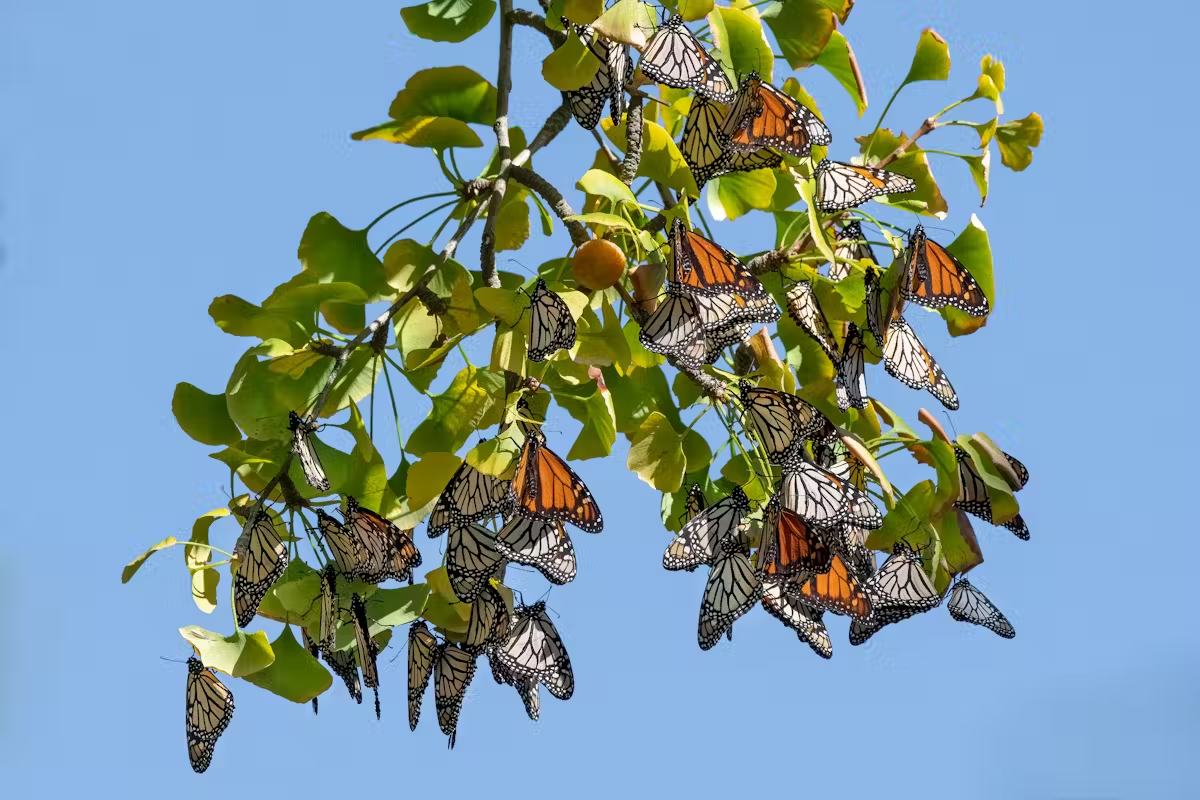
Butterfly Identification & Conservation
Butterfly Conservation SA – Guides to butterfly-friendly gardening and species conservation.
Butterflies Australia (CSIRO) – National citizen science project and ID app.
iNaturalist Australia – For crowd-sourced ID and mapping local sightings.
Australian Museum – Online resources for Australian Lepidoptera
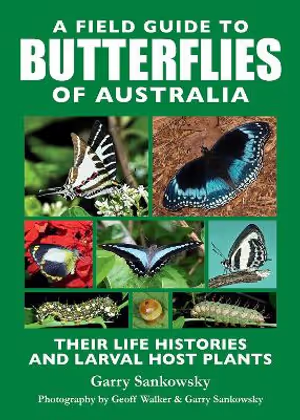
Books
A Field Guide to Butterflies of Australia by Sankowsky, Garry and Geoff Walker. This one’s a classic field guide. It’s not too technical, which makes it great if you’re just starting out.
Butterflies of Australia by Michael Braby. When you’re ready to go beyond the basics, Braby’s your guy. He’s one of Australia’s leading butterfly experts, and this book is beautifully detailed.
100 Australian Butterflies, Bees, Beetles & Bugs by Georgia Angus. This one’s ideal for getting little ones excited about all the tiny things in the garden. It’ll rekindle your own wonder too.
Butterfly Host Plants of SEQ and northern NSW by John T. Moss. If you live in Southeast Queensland or Northern NSW and want to plant a butterfly-friendly garden, this is your holy grail. It tells you exactly what to grow and who you’ll attract.
Sources:
- Australian Lepidoptera – Links to descriptions of biology, behaviour, distribution, life histories, and images of 5,623 named and described Australian Lepidoptera species.
- Butterfly Conservation South Australia – a NFP conservation group.
- Backyard Buddies – education initiative of the Foundation for National Parks & Wildlife.
- How urban gardens create greener, healthier cities – The Wilderness Society.
- CSIRO – Moth and Butterflies
- Threatened Species Recovery Hub – Butterfly Fact Sheet
- Moths and Butterflies Australasia – NFP study, research and conservation group
Research:
- Monarch butterflies are in decline in NZ and Australia – they need your help to track where they gather – Myron Zalucki, The University of Queensland
- Urban yards as potential conservation space: large, diverse gardens may be valuable resource patches for butterflies. – Nason, L.D., Eason, P.K., 2023 – Urban Ecosyst 26, 1573–1588
- Evidence on how urban gardens help citizens and cities to enhance sustainable development. Review and bibliometric analysis
Ribeiro, A., Madureira, L., & Carvalho, R., 2023 – Landscape and Urban Planning, Volume 236, August 2023, Article 104766 - Gardens’ contribution to people and urban green space
Hanson, H. I., Eckberg, E., Widenberg, M., & Alkan Olsson, J., 2021 – Urban Forestry & Urban Greening - Habitat fragmentation and its impact on native butterfly communities in urban Brisbane
Braby, M. F. & Williams, M. R., 2016 – Austral Entomology - Butterfly conservation in Australia: the role of small habitat patches in urban landscapes
Daniels, C. B. & Kirkpatrick, J. B., 2006 – Pacific Conservation Biology


